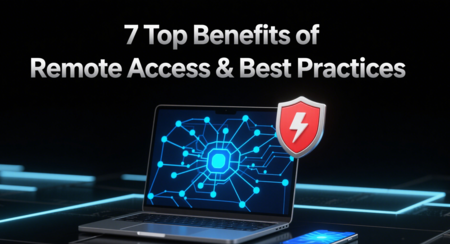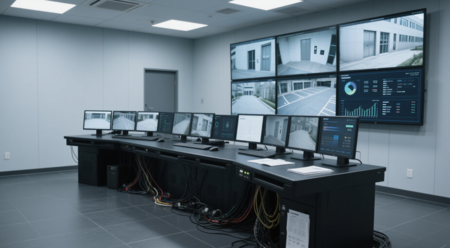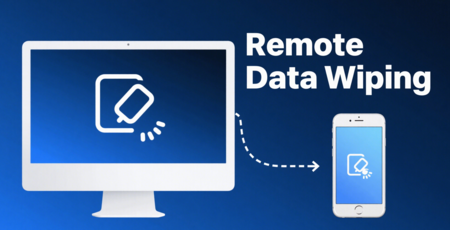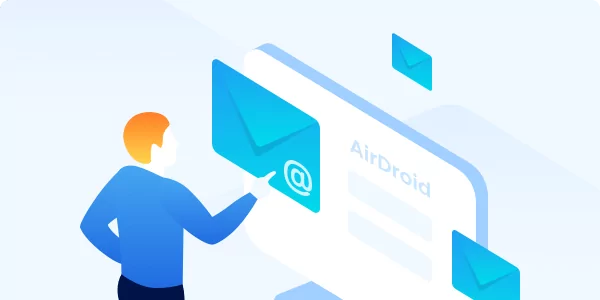7 Top Benefits of Remote Access & Best Practices
Remote access serves as a critical enabler for modern enterprises, allowing employees to maintain productivity and connectivity in a rapidly evolving work environment. This article explores the top benefits of remote access and best practices for its implementation.
Part 1: What is Remote Access?
Remote access refers to the ability to connect to devices or network from a distant location, typically through secure channels over the internet. This technology allows employees to access organizational resources, applications, and data from anywhere, whether they are working from home, a coffee shop, or while traveling. Remote access can be achieved through various methods, including Virtual Private Networks (VPNs), remote desktop software, and cloud-based solutions.

Part 2: 7 Top Benefits of Remote Access
Remote access ensures business continuity, reduces costs, boosts employee productivity, enhances security, widens talent pools, improves customer service, and offers better scalability.
1 Ensure Business Continuity
Remote access services provide businesses with the flexibility and scalability needed to maintain operations during unexpected disruptions. Employees can access company resources remotely, ensuring that IT support and other critical functions remain uninterrupted. This capability is crucial for maintaining productivity and minimizing downtime during emergencies, natural disasters, or other unforeseen events.
2 Cost Savings
By adopting remote access solutions, organizations can significantly reduce operational costs. Remote work eliminates the need for physical office space, utilities, and other overhead expenses. Furthermore, businesses can save on travel costs by allowing employees to work from home or other remote locations.
3 Boost Employee Productivity
Remote access empowers employees to work from anywhere, enabling them to manage their time more effectively. This increased flexibility often leads to higher job satisfaction and productivity, as employees can create optimal work environments that suit their personal preferences.
4 Enhance Security
As cyberattacks targeting remote access vulnerabilities have become increasingly common, many organizations worry about the security risks of remote access tools, fearing that unencrypted connections could be hacked, sensitive data leaked, or unauthorized access granted to critical systems.
However, with the right tools, these concerns can be addressed effectively. Robust security measures such as encryption, multi-factor authentication, and strict access control policies can safeguard company information, ensuring that only authorized personnel can access critical resources. Solutions like Airdroid Business offer advanced security features, including end-to-end encryption to protect data transmission, multi-factor authentication for added user verification, making it a viable option for businesses concerned about data breaches.
5 Access to a Wider Talent Pool
Remote access allows companies to hire talent from anywhere in the world, breaking geographical barriers. This enables organizations to recruit individuals with diverse skills and perspectives, fostering innovation and creativity within teams. The ability to tap into a global talent pool can significantly enhance an organization's competitiveness in the market.
6 Improve Customer Service
Remote IT support provides immediate assistance to customers without the need for a technician to be physically present. This capability can improve customer satisfaction and loyalty by ensuring that clients receive timely help with their issues.
7 Better Scalability
Remote access solutions offer businesses the flexibility to scale their IT systems up or down as needed. During periods of growth, organizations can quickly acquire the necessary hardware and software to meet increased demands. Conversely, during market instability, businesses can easily reduce their IT resources without incurring unnecessary costs. This adaptability ensures that organizations remain agile and responsive to changing market conditions.
Tips: Potential Drawbacks of Remote Access
While remote access offers numerous advantages, it is essential to acknowledge its potential drawbacks. These may include:
| Drawbacks | Description & Solution |
|---|---|
| ⚠️Security Risks | If not properly secured, remote access can expose organizations to cyber threats ✅ Solution: To avoid these risks, businesses should pick remote access tools with top-notch security features, like strong encryption and multi-factor authentication. |
| ⚠️Connectivity Issues | Dependence on stable internet connections can lead to disruptions in access ✅ Solution: Opt for remote access tools that use WebRTC technology. It has super-low latency, so you can work smoothly even in real-time, high-demand situations. Tools like Airdroid Business provides Dynamic Mode function based on WebRTC technology. |
| ⚠️Reduced Team Collaboration | Remote work may hinder spontaneous interactions and collaboration among team members ✅ Solution: Remote teams can stay connected by using project management tools and having regular virtual meetings. These tools help everyone stay on the same page and work together effectively. |
Part 3: Best Practices for Remote Access
To optimize the benefits of remote access, organizations should implement best practices customized to their unique needs. Here are some practical applications:
1 Allowing Employees to Work from Home
In our increasingly digital society, remote work has become a standard practice. By providing employees with remote access to company resources, organizations can support their workforce in maintaining productivity while enjoying the flexibility of working from home.

2 Remote Access for Collaborative Design Work
Remote access facilitates collaboration among team members working on design projects. Employees can share files, participate in brainstorming sessions, and provide feedback in real-time, regardless of their physical location. This capability is particularly beneficial for creative teams that require constant communication and collaboration.

3 Remote Access to Security Monitoring Systems
In high-security environments such as financial institutions or museums, security personnel can utilize remote access to monitor security systems. They can log in from anywhere to view live feeds, check recorded footage, and respond to incidents promptly. This capability enhances security management and ensures that potential threats are addressed immediately.

4 Remote Data Wiping
In a corporate environment, employees may carry company-issued laptops, tablets, or smartphones while traveling. If these devices are lost or stolen, sensitive data could be compromised. Remote access solutions allow administrators to send remote wipe commands to erase data from lost devices, protecting the organization from data breaches.

5 Remote Training and Knowledge Sharing
Remote access enables organizations to conduct training sessions and knowledge-sharing initiatives without geographical constraints. Employees can participate in webinars, workshops, and training programs from anywhere, promoting continuous learning and development.

Part 4: Conclusion
In conclusion, remote access has transformed the way modern enterprises operate, offering numerous benefits that enhance productivity, reduce costs, and improve customer service. By understanding the key advantages and implementing best practices, organizations can fully leverage remote access technology to drive growth and success.







Leave a Reply.